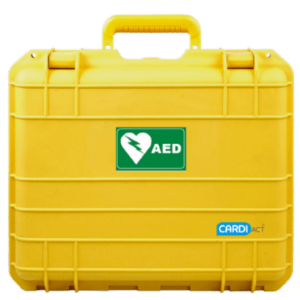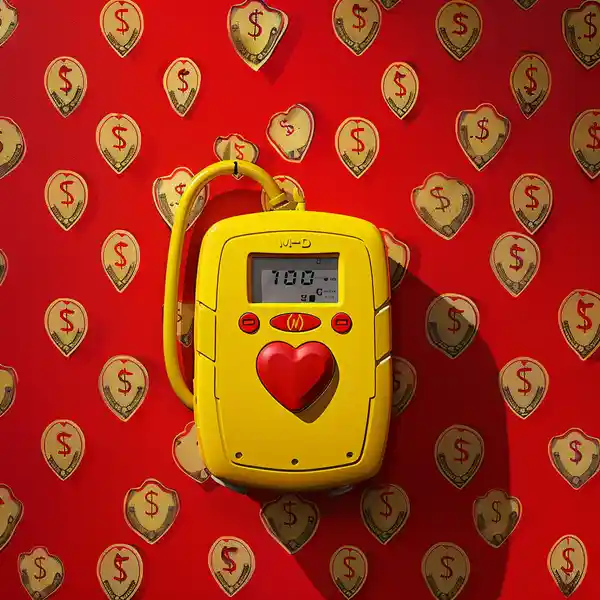
AED Cabinet Guide
Let us help you learn the in’s and outs of Defib cabinets.
Dylan Holmes was living a regular day, one that turned extraordinary not just because he opted for an unplanned overtime shift, but because that decision aligned with the stars in a life-saving encounter.
On that fateful day at an industrial business in Mackay, Queensland, Dylan wasn’t meant to be at work when his heart stopped beating, casting him into the throes of a sudden cardiac arrest. As his pulse faded and breath grew distant, it was an Automated External Defibrillator (AED), within arm’s reach, that breathed life back into the 42-year-old workshop operator.
In the whirlwind of panic and urgency, finding a life-saving defibrillator can be akin to searching for a needle in a haystack. Every second pulses with critical importance, each moment a step either towards recovery or tragedy.
Amidst the rapid heartbeat of such crises, the visibility and accessibility of an AED can be the defining factor that swings the pendulum towards survival. When stress and panic cloud judgement, an AED stored in a cabinet with easy signage and close access isn’t just a convenience, but a saviour.
In this article we will go on a deep dive into what you should know about defibrillator cabinets and help you make an educated choice.

What is a Defibrillator Cabinet?
A defibrillator cabinet is a specialized storage unit designed to house and protect AEDs. Fitted with noticeable signage, these cabinets ensure that AEDs are easily located during emergencies, reducing response time and potentially saving lives.
Do AEDs Need to be in a Cabinet?
While it’s not a mandatory requirement, storing an AED in a cabinet ensures it’s easily seen and accessed in emergency situations, rather than being concealed in a drawer or an inconspicuous place.
How to Store a Defibrillator
AED cabinets offer an ideal storage solution, being weatherproof, dust-resistant, and designed to be free from water intrusion. Although AEDs should be kept away from direct sunlight and extreme temperatures, cabinets ensure they are accessible and safe.

Where to Install an AED Cabinet
Place these cabinets where incidents are most likely to occur. For instance, in a warehouse or workshop, it’s a common mistake to keep the AED in the office; however, it should be closer to the work area to ensure a response time of under 3 minutes. For every minute someone is not defibrillated their chance of survival can drop 10%, so time is of the essence.
AED Cabinet Mounting Height in Australia
In Australia, the mounting height for AEDs should adhere to the manufacturer’s recommendation, generally around 1.2-1.4m. Visibility is a crucial factor to consider to ensure quick access during emergencies.
Electricity Consumption
Most of our AED cabinets, including the CardiAct Alarmed AED Cabinet with Strobe Light, are battery-powered, requiring no hardwiring and using minimal electricity.
Okay so here’s some options
- CARDIACT Standard AED Cabinet: Designed for indoor use, offering visibility and protection against dust and grime.
- CARDIACT Alarmed AED Cabinet with Strobe Light: Designed for indoor use Featuring an alarm and strobe light for heightened attention during emergencies. Alarm powered by 9v battery
- CARDIACT CC-90 Alarmed Outdoor Cabinet: Weatherproof and compact, ensuring AED safety and visibility outdoors.
- Cardiact CC-60 Alarmed Outdoor AED Cabinet with Heavy Duty Code Lock This AED is weatherproof and made out of galvanised steel which helps keep it rust free in wet and salty environments. It’s handy code lock helps deter would be thieves.
- Cardiact AED Tough Case On the go? This tough case is great for keeping your defibrillator safe if you work on remote worksites. Its
- CARDIACT AED Wall Bracket: A low-cost, easy-to-install solution for making AEDs highly visible and accessible in the workplace.
Get Your AED Storage ready today
Choosing the right AED cabinet is essential for ensuring quick and easy access to defibrillators during emergencies. At DDI Safety, we provide a variety of options tailored to meet diverse needs, ensuring that your AED is not only protected but also easily accessible to save lives when every second counts. Explore our range and make a choice that suits your environment and safety requirements.
Ensure that your AED is not just a purchase but a well-integrated part of your safety protocol, ready to deliver life-saving shocks whenever needed.











